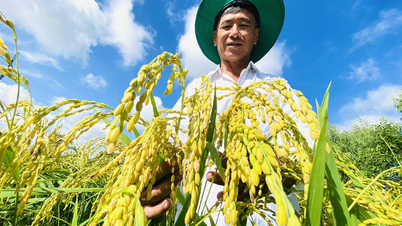Substack, the new life of journalism
One problem is for news organizations: How do you get your work out to readers and get paid to do so? Another problem is for journalists: How do you build an audience? Without a reliable audience, every piece you publish may go unread or just be a money-making tool for someone else.

The news platform Substack both promotes journalistic values and can bring in large revenues for the press. Photo: GI
The search for an audience has become increasingly difficult for journalists and news organizations in recent years, leading to a rush to social media platforms like Facebook, Twitter, Telegram and, more recently, TikTok to regain lost or new audiences – where users are rarely inclined to leave these platforms for any real journalism, let alone pay for articles. This reality is becoming increasingly clear and in more “extreme” directions.
But Substack is both. It may act like a social network, but it’s primarily a place to host paid articles and send them to a subscriber list. In other words, it’s a dedicated home for news organizations, journalists, and actual readers of journalism and even literature.
It’s a platform that helps writers retain readers and publishers get paid without having to print or rely on advertisers. It’s reshaping the market for the written word. It could be much more valuable and meaningful to journalism and media than Facebook, Twitter and especially TikTok.
In 2020, writer Bari Weiss decided to leave the New York Times to rebrand her Substack news channel from “Common Sense” to “The Free Press”: an attempt to create her own “newspaper” in the form of a newsletter. Along with being active and promoting the news channel on Twitter, she brought her readers to The Free Press: It now has 280,000 free subscribers, with at least 10% paying a subscription fee of $80 to $96 per year, bringing the channel up to $2.5 million in revenue.
There’s a lot of money to be made on Substack by some of the most famous people. The platform’s most successful writer—historian Heather Cox Richardson, who writes the Daily Mail from an American email—has “hundreds of thousands” of paying subscribers. At $50 to $60 a year, that would earn Richardson at least $5 million a year.
Other notable Substack writers include Matt Taibbi, Glenn Greenwald, Matthew Yglesias, and Andrew Sullivan—all of whom, like Weiss, have previously worked for major media outlets. Sullivan is making over $1.1 million. Yglesias is making over $1 million…
However, the Substack platform itself is not doing much, with a reported total revenue of $9 million in 2021. The company was co-founded by former journalist Hamish McKenzie, developer Jairaj Sethi, and tech CEO Chris Best in the US in 2017. They take 10% of the revenue earned by writers or creators (Substack also allows podcasts and videos like other social networks).
Where journalism is more serious and thoughtful
While Substack’s user base is relatively small, its cultural impact has been significant. “Substack is providing an alternative, more thoughtful place to write,” says Farrah Storr, a former Elle editor who is now Substack’s head of UK writer partnerships.

Substack is being touted as a solution to rescue journalism in general, journalists and writers in particular, in terms of both professional value and financial issues. Photo: TNS
Storr said the rush to free journalism in the digital age of the 2010s has made journalism worse, as it has become caught up in the traffic cycle, leading to articles that are increasingly of poor quality, even “clickbait.” Substack takes a different approach, allowing journalists to be paid directly for their work.
Meanwhile, Facebook and Twitter are miserably devaluing journalists, simply promoting sensational, viral headlines that attract advertising rather than in-depth articles.
“I enjoy it more than anything else I do. You’re constantly building your ideas and building an audience that understands your worldview ,” says one popular writer on Substack, citing a recent 3,000-word long-form article about Brexit and public opinion that was well-received and paid for.
Eleanor Halls, the Telegraph's music editor who also writes the pop culture column PassTheAux on Substack, explains the appeal of a highly engaged audience: “Your readers are there because they care deeply about what you write, or specifically what you think.” Journalist Ian Leslie, who writes the newsletter The Ruffian, agrees: “They're there for you, and so the more 'friends' you have, the better.”
According to the writers, Substack offers “a larger arsenal of expression” than print or even top online news platforms. In addition to articles, you can post links, videos, tweets, images, charts; the formatting can be tailored to fit your argument.
Why do journalists have to write for free for social networks?
But Substack is more than just another blogging platform. Its key innovation, and advantage, is the way it allows writers to win back readers, reaching them via email.
Can Substack help journalism compete with social media? Helen Lewis, a successful writer on the platform, thinks so. Because “it gives writers a lot of what they want” from the exchange, namely a direct connection with readers. Jonn Elledge, whose column has nearly 5,000 readers, says subscribers have “chosen to invest directly in me as a writer.”
Thus, Substack is a good suggestion to overcome the current journalism crisis, helping journalists regain trust from readers, as well as being able to make money from their articles.
At this point, celebrities, journalists, excellent writers or press organizations that are “actively” active on Facebook, TikTok, Twitter or YouTube may ask the question: Why should we lower ourselves to work for free or with low pay for social networks?
Hoang Hai (according to Substack, TNS)
Source




































































































Comment (0)